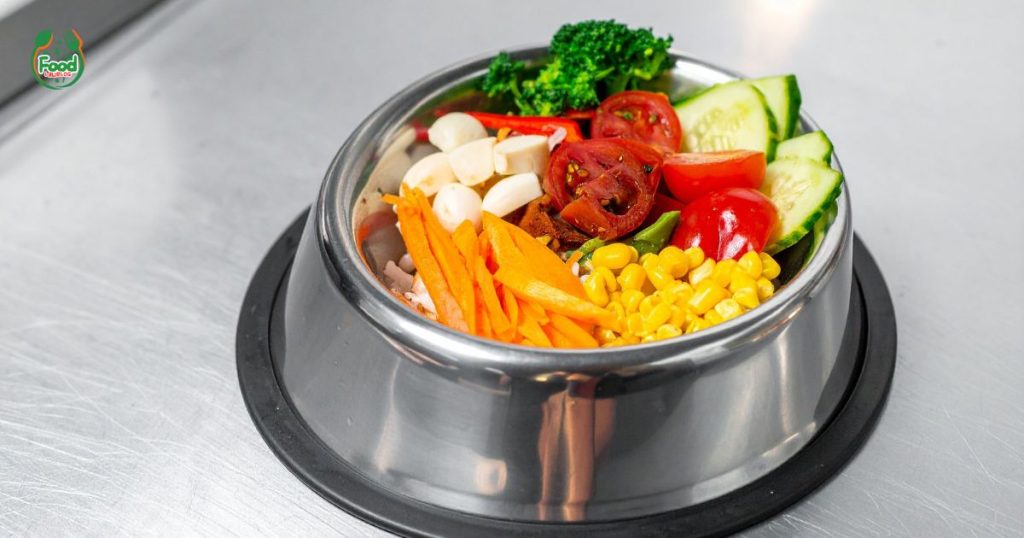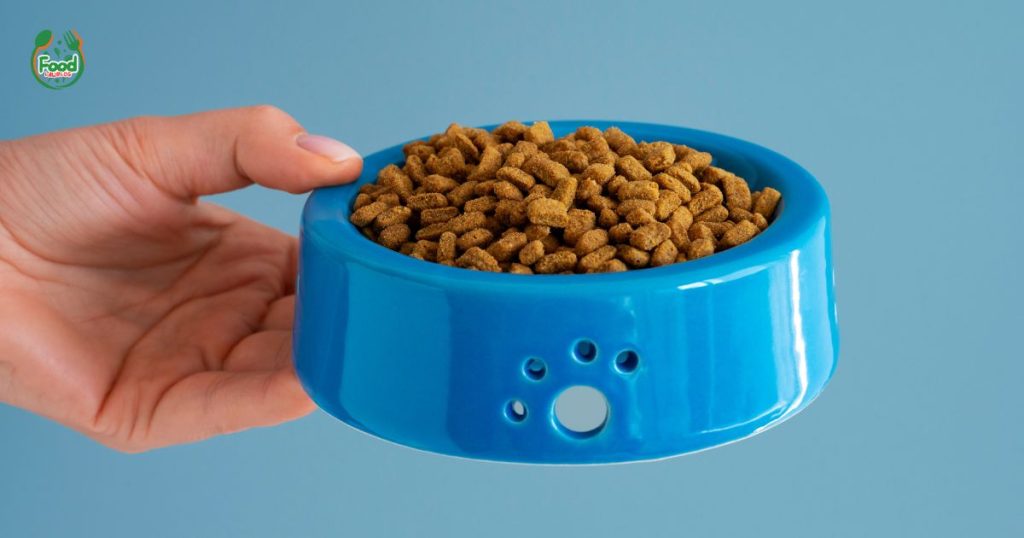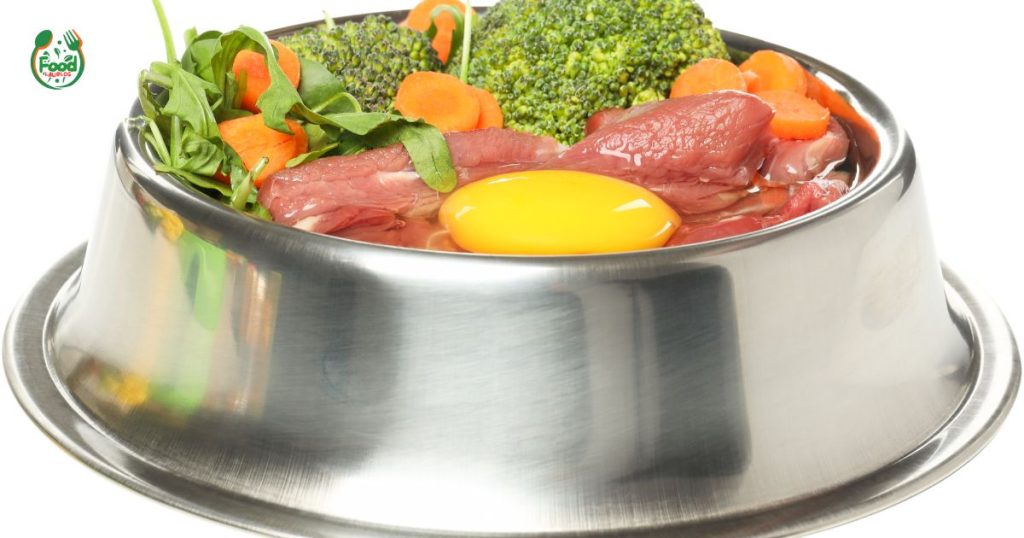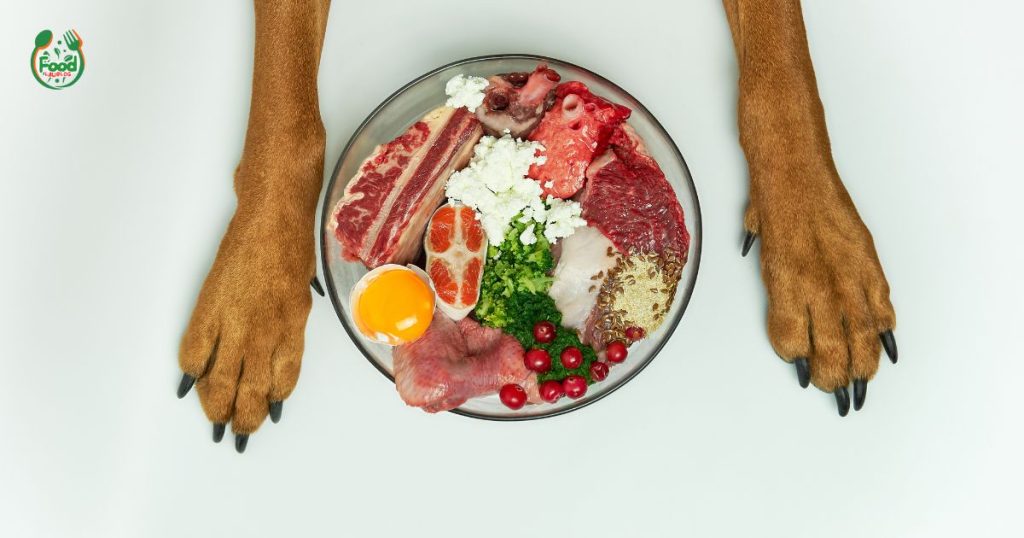Introduction
Limited Ingredient Dog Food: Finding the right food for a dog with a sensitive stomach or suspected allergies can be a daunting task. When your furry companion suffers from itchy skin, digestive upset, or chronic ear infections, the food bowl is often the first place you look for answers. This is where a limited ingredient diet, or LID, enters the conversation, offering a simplified approach to canine nutrition that can bring immense relief.

This comprehensive guide is designed to navigate the complex world of limited-ingredient dog foods in 2026. We will demystify labels, explore different protein and carbohydrate sources, and provide a clear framework for selecting the best possible option for your dog’s unique needs. By the end, you will have the knowledge to confidently choose a food that supports your dog’s health from the inside out, turning mealtime back into a happy, stress-free event.
Meta Title & Description
- Meta Title: Best Limited Ingredient Dog Food 2026: A Buyer’s Guide
- Meta Description: Discover the best limited-ingredient dog food for sensitive stomachs. Our 2026 guide covers novel proteins, grain-free options, and guides on selecting the right diet.
What Exactly is a Limited Ingredient Diet (LID)?
A limited ingredient diet is precisely what its name implies: a pet food formulated with a minimal number of ingredients. The core philosophy is “less is more.” The goal is to reduce a dog’s exposure to potential dietary triggers that can cause adverse reactions. While there is no official industry standard defining the exact number of ingredients, a true LID typically features:
- A Single Animal Protein Source: Think one type of meat, poultry, or fish, such as lamb, salmon, or duck. This is a cornerstone of LID, helping to pinpoint sensitivities.
- A Single Carbohydrate Source: Common choices include sweet potatoes, peas, or oatmeal, which provide energy while minimising potential irritants.
- A Carefully Selected List of Essential Nutrients: These include healthy fats, vitamins, and minerals required to create a complete and balanced meal that meets established nutritional standards.
It is crucial to understand that “limited ingredient” does not automatically mean “hypoallergenic” or “better.” The value of a LID lies in its simplicity. By restricting the components in your dog’s bowl, you can more easily identify what agrees with their system and, more importantly, what does not.
The Key Difference: Allergies vs. Intolerances
Before diving deeper into diets, it’s helpful to distinguish between a food allergy and a food intolerance.
- Food Allergy: This is an immune system response. The body mistakenly identifies a specific food protein (like chicken or beef) as a harmful invader, triggering an immune reaction. Symptoms often manifest as itchy skin, hives, facial swelling, chronic ear or foot infections, and occasionally gastrointestinal signs, such as vomiting or diarrhoea.
- Food Intolerance: This is a digestive issue, not an immune one. The dog’s digestive system has trouble breaking down a certain ingredient. Symptoms are typically gastrointestinal in nature, including gas, bloating, diarrhoea, and stomach cramping.
A limited-ingredient diet can be an invaluable tool for managing both conditions by simplifying the dietary landscape.
Signs Your Dog Might Benefit from a Limited Ingredient Diet
Is your dog constantly scratching, licking their paws, or suffering from recurrent digestive issues? These could be signs that their current food isn’t the right fit. While these symptoms can have many causes, a food sensitivity is a common culprit.
Common indicators include:
- Dermatological Issues:
- Persistent itching, scratching, or chewing at the skin
- Red, inflamed skin or hot spots
- Chronic ear infections, often with a yeasty smell
- Excessive paw licking and chewing
- Hair loss or a dull, brittle coat
- Gastrointestinal Upset:
- Chronic diarrhoea or consistently soft stools
- Frequent vomiting
- Excessive gas or flatulence
- Loud gurgling stomach sounds (borborygmi)
- Lack of appetite or “picky” eating habits
- General Symptoms:
- Low energy or lethargy
- Poor stool quality
Disclaimer: These symptoms can also indicate other medical conditions. It is essential to consult your veterinarian to rule out other causes before making significant dietary changes.
How to Choose the Best Limited Ingredient Dog Food: A 2026 Framework
Selecting the right LID is not about finding a single “best” brand, but about finding the best formula for your individual dog. Here’s a systematic approach to making an informed choice.
1. Decoding Protein Sources: Novel vs. Hydrolysed
The protein source is the most critical component of an LID, as proteins are the most common triggers for true food allergies.
Novel Proteins
A “novel” protein is one that your dog has likely never been exposed to before. Common dog foods often rely on chicken, beef, and lamb as their primary protein sources. Therefore, novel proteins might include:
- Duck
- Venison
- Rabbit
- Kangaroo
- Salmon
- Insects (a sustainable and emerging option)
The logic is simple: if your dog has never eaten it, they are unlikely to have developed an allergy to it. This makes novel protein diets an excellent starting point for an elimination trial.
Hydrolyzed Proteins

Hydrolysed protein diets take a different approach. The protein (often chicken or soy) is broken down into such tiny pieces (peptides and amino acids) that the immune system no longer recognises it as an allergen. These diets are highly effective but are typically available only through a veterinarian and are often used for diagnostic purposes or severe cases.
2. Assessing Carbohydrate and Fibre Sources
After protein, carbohydrates provide energy and fibre for digestive health. In a LID, the goal is to use a single, easily digestible source of information.
- Common Grain-Inclusive Options: Oatmeal, barley, and brown rice are gentle on the digestive system, providing valuable nutrients and fibre.
- Common Grain-Free Options: Sweet potatoes, peas, lentils, and chickpeas are popular alternatives to grains. They offer complex carbohydrates and are a good choice for dogs sensitive to grains.
The Grain-Free vs. Grain-Inclusive Debate in LIDs
The discussion around grain-free diets continues. For years, grains were blamed for allergies, but research now shows that true grain allergies are rare. Most food allergies are associated with proteins from animal sources.
The FDA has investigated a potential link between certain grain-free diets (particularly those high in peas, lentils, and other legumes) and a heart condition called non-hereditary dilated cardiomyopathy (DCM). While the connection is not fully understood and is likely multifactorial, it has led many veterinary nutritionists to recommend grain-inclusive diets unless a specific grain allergy is confirmed.
For a LID, a formula with a single, whole grain, such as oatmeal or brown rice, can be an excellent and safe choice. If you opt for a grain-free diet, look for formulas that don’t rely excessively on legumes as their primary ingredient.
3. Understanding Fats and Essential Supplements
Fats are a concentrated energy source and are essential for maintaining healthy skin and coat.
- Omega-3 and Omega-6 Fatty Acids: Look for a guaranteed source of these essential fatty acids, often from fish oil (like salmon oil) or flaxseed. They play a crucial role in reducing inflammation, which is particularly beneficial for dogs with skin allergies.
- Taurine: This amino acid is critical for heart health. While most dogs can synthesise their own taurine, some breeds are more prone to deficiencies. AAFCO standards require taurine in cat food, but not always in dog food. Reputable manufacturers will often supplement their diets with taurine, especially in grain-free or lamb-based formulas.
- Prebiotics and Probiotics: These ingredients support gastrointestinal health. Prebiotics (like chicory root or FOS) are fibres that feed the good bacteria in the gut. Probiotics are live, beneficial bacteria that help maintain a healthy gut microbiome. A robust microbiome is a cornerstone of digestive and immune health.
4. Reading the Label: AAFCO and Feeding Trials
The dog food label is your most powerful tool. Here’s what to look for:
- The AAFCO Statement: The Association of American Feed Control Officials (AAFCO) sets nutritional standards for pet foods. Look for a nutritional adequacy statement on the bag, which should read something like: “[Product Name] is formulated to meet the nutritional levels established by the AAFCO Dog Food Nutrient Profiles for [Life Stage, e.g., Adult Maintenance].”
- Feeding Trials: An even higher standard is a statement that reads: “Animal feeding tests using AAFCO procedures substantiate that [Product Name] provides complete and balanced nutrition…” This means the food was fed to dogs in a controlled trial to ensure it performs well in real-world conditions. While not always feasible for smaller companies, it is a gold standard of quality assurance.
The 10-Point Buyer’s Checklist
When you’re at the store or browsing online, use this checklist to evaluate a potential LID:
- Single, clearly named animal protein? (e.g., “duck,” not “poultry meal”)
- Single, easily digestible carbohydrate? (e.g., sweet potato, oatmeal)
- Does the AAFCO nutritional adequacy statement present?
- Omega-3 fatty acids included? (e.g., fish oil, flaxseed)
- Named fat source? (e.g., “chicken fat,” not “animal fat”)
- No artificial colours, flavours, or preservatives?
- Is taurine supplemented? (Especially for grain-free or lamb formulas)
- Does the company have a good track record of recalls? (A quick search of the FDA database is wise)
- Is the manufacturer transparent about its sourcing and manufacturing processes?
- Is the formula appropriate for your dog’s life stage and size?

Choosing a Format: Kibble, Canned, Cooked, or Raw?
Limited-ingredient diets are available in various formats, each with its own pros and cons.
Format
Pros
Cons
Dry Kibble: Convenient, cost-effective, long shelf life, helps clean teeth. Highly processed, with a lower moisture content, and may contain more binders.
Canned/Wet Food: High moisture content (good for hydration), highly palatable, less processed. More expensive, requires refrigeration after opening, and has a shorter shelf life.
Gently Cooked, minimally processed, high digestibility, often human-grade ingredients. Very expensive, requires freezer/fridge space, and has a short shelf life.
Freeze-Dried Raw Benefits of raw with the convenience of dry, highly palatable. Very expensive, requires rehydration, and poses a risk of pathogens if not handled properly.
For most owners starting a LID, dry kibble or canned food offers the best balance of quality, convenience, and affordability. An archetype example would be a “Single-Protein Salmon and Sweet Potato LID Kibble.” For dogs with severe issues or for owners seeking the highest level of digestibility, gently cooked options can be a game-changer.
Special Considerations: Breed Size and Life Stage
A dog’s nutritional needs change based on their size and age.
- Small vs. Large Breeds:
- Small breed formulas feature smaller kibble sizes, designed for smaller mouths, and are often more calorically dense to support faster metabolisms.
- Large breed formulas have larger kibble to encourage chewing and often contain controlled levels of calcium and phosphorus to support healthy joint development and prevent orthopaedic issues. They also have a lower caloric density, promoting a lean body condition.
- Puppy, Adult, and Senior Life Stages:
- Puppy formulas are higher in calories, protein, and specific nutrients, such as DHA, which support brain and eye development.
- Adult maintenance formulas are balanced for healthy, active adult dogs.
- Senior formulas are typically lower in calories to prevent weight gain and may contain added joint support, such as glucosamine and chondroitin.
Always choose a LID formulated for your dog’s specific life stage and size to ensure they receive appropriate nutrition.
The Veterinary-Guided Elimination Diet: The Gold Standard
If you strongly suspect a food allergy, the most accurate way to diagnose it is through an elimination diet conducted under the supervision of your veterinarian. This is a strict diagnostic tool, not a long-term feeding plan.
7-Step Elimination Diet Protocol
- Consult Your Veterinarian: This is non-negotiable. Your veterinarian will help you choose an appropriate diet (often a prescription hydrolysed or novel protein diet) and rule out other potential medical issues.
- Select the Diet: Choose a strict novel protein or hydrolysed protein diet. This will be the only thing your dog eats.
- Eliminate Everything Else: For 8-12 weeks, your dog must consume only the prescribed food and water. This means no treats, no table scraps, no flavoured toothpaste, no rawhides, and no edible chew toys. Even the crumbs from a dropped piece of cheese can invalidate the trial.
- Manage Treats: Use the prescribed food as treats. You can use kibble pieces or bake canned food into small treats.
- Monitor Symptoms: Keep a detailed journal of your dog’s skin, coat, and digestive health. Note any changes, positive or negative. It can take several weeks for the old allergens to clear the system and for inflammation to subside.
- The Re-Challenge: If symptoms improve significantly by the end of the trial, your vet will guide you through a “re-challenge.” You will reintroduce one ingredient from their old diet (e.g., chicken) for up to two weeks.
- Identify the Culprit: If symptoms return after reintroducing an ingredient, you have likely found the trigger. If there is no reaction, that ingredient is likely safe, and you can move on to testing the next one.
This process is rigorous but provides definitive answers, allowing you to choose a long-term LID with confidence.
Safe Transitioning: The 14-Day Plan
Switching your dog’s food too quickly can cause digestive upset. A slow transition is key, especially for a sensitive dog.
- Days 1-4: 75% old food, 25% new food
- Days 5-8: 50% old food, 50% new food
- Days 9-12: 25% old food, 75% new food
- Days 13-14: 100% new food
Observe your dog’s stool and energy levels throughout this period. If you notice soft stools, extend the current phase for a few more days before increasing the new food.
Internal Linking Opportunity: For a visual guide on what to look for, see our [Dog Stool Chart: What Your Pet’s Poop is Telling You].

Practical Tips for Success with a LID
- Proper Storage: Keep dry food in its original bag and place it inside an airtight container. This preserves fats and vitamins and keeps the lot number accessible in case of a recall.
- Calculating Calories: Obesity is a major health concern. Use the feeding guide on the bag as a starting point, but adjust based on your dog’s body condition. Your vet can help you determine your dog’s ideal caloric intake.
- A Simple Home Digestibility Test: Curious about your kibble? Try the “soak test.” Place a few pieces of kibble in a cup of warm water. A high-quality kibble should start to break down and absorb water within approximately 15-20 minutes, turning into a soft, mushy consistency. Kibble that remains hard or swells without breaking apart may be more difficult for your dog to digest.
- Budget and Value: LID foods are often more expensive. However, investing in a quality diet can save you money on vet bills for allergy-related issues down the road. Compare the cost per pound and cost per calorie to find the best value.
Red Flags, Recalls, and Responsible Sourcing
- Recall History: Before committing to a brand, do a quick search on the FDA’s Pet Food Recall database. While a single recall isn’t necessarily a deal-breaker (how the company handled it matters), a pattern of repeated recalls is a major red flag.
- Sourcing and Manufacturing Transparency: Reputable companies take pride in their quality control. Look for brands that own their manufacturing facilities, employ a veterinary nutritionist, and are open about where they source their ingredients. Avoid brands that are vague or use marketing buzzwords without substance.
Outbound Link Suggestion: Check resources from the [AVMA (American Veterinary Medical Association)] or the [WSAVA (World Small Animal Veterinary Association)] for global nutrition guidelines.
Frequently Asked Questions (FAQs)
1. How long does it take for a limited-ingredient dog food to work?
It can take 8-12 weeks for all previous allergens to clear your dog’s system and for inflammation to subside fully. While you might see some improvement in digestion sooner, skin issues often take longer to resolve. Patience is key.
2. Can I switch between different proteins within the same LID brand?
It is best not to rotate proteins until you have confirmed which ones your dog tolerates well. Once you have identified a few “safe” proteins through an elimination trial, rotation can be beneficial for providing a wider range of nutrients and preventing new sensitivities from developing.
3. Is a grain-free, limited-ingredient diet better for allergies?
Not necessarily. True grain allergies are uncommon in dogs. The most common allergens are animal proteins, such as those found in beef, chicken, and dairy products. A grain-inclusive LID with a novel protein is often a safer and more effective starting point, especially considering the ongoing research into DCM.
4. What treats can I give my dog on a limited ingredient diet?
During a strict elimination trial, use only pieces of the prescribed food as treats. Once you have identified safe ingredients, you can look for single-ingredient treats that match, such as dehydrated salmon pieces for a dog on a salmon-based diet. Always read the ingredient list on treats carefully.
5. Are expensive LID foods really worth it?
Price does not always equal quality, but higher-quality ingredients, rigorous testing, and ethical sourcing cost more. An effective LID that resolves chronic health issues can ultimately be less expensive than frequent vet visits, medications, and prescription diets.
6. Do I need a prescription for a limited-ingredient dog food?
Most LIDs are available over-the-counter. However, hydrolysed protein diets, which are used for severe allergies or diagnostic purposes, are typically therapeutic diets that require a veterinarian’s prescription.
7. My dog is still itching on a new LID. What should I do?
First, ensure you are being 100% strict with the diet—no other foods or treats. Second, give it more time (up to 12 weeks). Third, your dog may be allergic to the novel protein or carbohydrate in the new food. It may also be an environmental allergy (such as pollen or dust mites), which requires a different treatment approach. Consult your veterinarian.
8. Can I prepare a homemade limited-ingredient diet for my dog?
Homemade diets can be a great option, but they are very difficult to balance nutritionally. If you choose this route, you must work with a board-certified veterinary nutritionist to formulate a complete and balanced recipe tailored to your dog’s specific needs.
Conclusion: Your Next Steps to a Healthier Dog
Choosing the best limited-ingredient dog food for 2026 is a process of careful evaluation and partnership with your veterinarian. It is not about chasing trends, but about methodical and observant care. By focusing on a single novel protein, a simple carbohydrate source, and a label backed by nutritional science, you can provide immense relief for a sensitive dog.
Your primary goal is to find a food that nourishes your companion while eliminating the ingredients that cause them discomfort. Utilise the frameworks in this guide to become a confident and informed advocate for your dog’s health.
Ready to take the next step? Schedule a consultation with your veterinarian to discuss your dog’s symptoms and determine if a limited ingredient diet is the right path forward. Together, you can create a nutritional plan that will have your best friend feeling happy, healthy, and comfortable for years to come.
<script type="application/ld+json">
{
"@context": "https://schema.org",
"@type": "BlogPosting",
"mainEntityOfPage": {
"@type": "WebPage",
"@id": "https://foodlawblog.com/"
},
"headline": "Best Limited Ingredient Dog Food 2026 Guide",
"description": "Limited Ingredient Dog Food: Finding the right food for a dog with a sensitive stomach or suspected allergies can be a daunting task. When your furry companion suffers from itchy skin, digestive upset, or chronic ear infections, the food bowl is often the first place you look for answers. This is where a limited ingredient diet, or LID, enters the conversation, offering a simplified approach to canine nutrition that can bring immense relief.",
"image": "https://foodlawblog.com/wp-content/uploads/2025/11/limited-ingredient-dog-food-1.jpg",
"author": {
"@type": "Person",
"name": "Habibur Rahman",
"url": "https://foodlawblog.com/about-us/"
},
"publisher": {
"@type": "Organization",
"name": "Habibur Rahman",
"logo": {
"@type": "ImageObject",
"url": "https://foodlawblog.com/wp-content/uploads/2025/11/cropped-cropped-latest-1.png"
}
},
"datePublished": "2025-11-08",
"dateModified": "2025-11-08"
}
</script>

